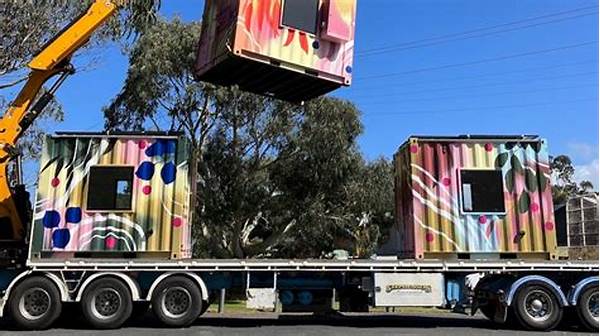Turning the Ordinary into the Extraordinary
Imagine repurposing hefty, industrial shipping containers for sale into sleek, state-of-the-art pop-up gyms. At first glance, the concept sounds like something out of a futuristic novel, but it’s happening right here, right now. This recent innovation is catching the attention of urban planners, fitness enthusiasts, and entrepreneurs alike. Transformations like these not only redefine exercise spaces but also offer unique, convenient and sustainable alternatives to traditional gyms. With creativity at the helm, shipping containers are evolving from mundane cargo holders to vibrant fitness hubs, stepping up the game in areas often devoid of structured exercise facilities.
Read More : Waste Containers For Dry Waste
Data suggests this trend is not only enhancing the urban landscape but also democratizing fitness by bringing opportunities to set up mini gyms in under-utilized spaces. Imagine your local park, previously dotted with only benches and playground equipment, now featuring compact pop-up gyms. It’s a fact: setting up outdoor exercise areas incentivizes people to keep fit while offering open-air environments that are both refreshing and dynamic. So, next time you see a bulky container, think of it not as a metal box, but as a potential fitness haven.
Advantages of Shipping Container Gyms
Mobility and Flexibility
Shipping containers for sale transformed into pop-up gyms are commendable for their portability. These gyms-on-the-go can be moved and set up in diverse locales, making them exemplary solutions for urban areas in need of flexible fitness options. The ability to transport these structures is beneficial for catering to events or targeting specific demographics. They can serve as temporary installations at festivals, sporting events, or even part of corporate wellness programs. With a bit of creativity, you can go beyond the typical gym experience and surprise fitness buffs with unexpected workout venues.
Sustainable and Eco-friendly Fitness
In the realm of environmental conservation, these container gyms stand out as beacons of sustainability. Recycling and repurposing old shipping containers reduces additional steel manufacturing, thereby cutting down carbon footprints. The eco-friendly allure of this movement cannot be overstated. Furthermore, outfitting these pop-up gyms with solar panels or rainwater collection systems boosts their green credentials while creating awareness among community users. It’s fitness with a conscience, integrating exercise routines with environmental stewardship—an attractive combo for today’s eco-conscious consumers.
Cost-Effectiveness
One of the primary selling points of shipping containers for sale transformed into pop-up gyms is their cost-efficiency. Traditional gym facilities require extensive real estate investments and long-term leasing commitments. Contrarily, container gyms drastically cut costs with lower initial investments and reduced maintenance expenses. Small business owners and fitness entrepreneurs can start a new venture without getting buried under financial burdens. With innovative layouts, these container gyms can offer all necessary workout equipment in a fraction of the space and cost.
Designing the Perfect Pop-Up Gym
The Future of Fitness: Shipping Containers as Game-Changers
Transforming the Fitness Landscape
Shipping containers for sale transformed into pop-up gyms highlights a revolutionary approach that challenges traditional fitness paradigms. By breaking free of the confines of bricks and mortar, container gyms can explore spaces previously inaccessible to larger gym chains. They introduce a dynamic interplay of form and function, blending fitness with flair for those seeking non-traditional experiences. This seismic shift in how we view gyms is akin to the food truck revolution—a portable, modern, and adaptable solution catering to on-the-go urban lifestyles.
Read More : Wheeled Mobile Trash Bins With Rubber Tires
Expanding Accessibility
These container-based gyms are democratizing fitness, ensuring no one is limited by location or finances when it comes to access to quality workouts. Whether positioned in underserved communities or as part of pop-up events in more affluent areas, they provide opportunities that were previously hard to come by. Moreover, community engagements can be enhanced through fitness classes, events, or workshops—encouraging a holistic lifestyle.
Conclusion
In conclusion, the movement to utilize shipping containers for sale transformed into pop-up gyms has marked a significant evolution in the fitness industry. They provide a practical, cost-effective, and environmentally friendly alternative to traditional workout spaces. With ongoing innovations and an increasing focus on sustainability, these pop-up gyms are not just a passing trend but a testament to the boundless possibilities of urban planning and community development. We’re witnessing a fusion of functionality and eco-awareness, embodying the future of fitness that is accessible, engaging, and transformative.










